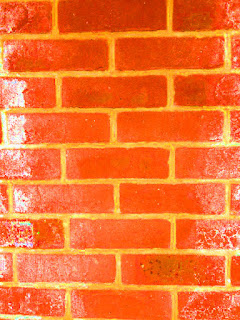- PLAN:
- Images of food from the internet.
- Healthy food.
- Unhealthy food.
- Recipes.
- Recipe Books.
- Original Images- start taking some photos.
- 2 pictures for the magazine so take a couple of pictures.
- Words.
- Quotes.
- Text
- Picture of the reality tv star.
- Pictures of who inspired Lucy- e.g. Jamie Oliver.
- Add a picture of Yoga.
Tuesday, 12 April 2016
Plan for Moodboard - Unit 51- MRS FRSOT
Monday, 11 April 2016
Assignment , MORGAN COMMENTS ON HER BLOG. MRS FRSOT
http://morganjays.blogspot.co.uk
Click the link to see my comments
Click the link to see my comments
Friday, 8 April 2016
MR COOPER: PHOTOGRAPHY: PHOTOSHOP SATURATION. TEXTURE AND COLOUR.
TEXTURE:
These are the edited texture and colour photos, they were edited on photoshop only changing the saturation. It was interesting to see the texture and colour in a different style.
I have learnt that when using photoshop it was originally hard to use the software, but now I understand how to use the software.
This will help me in the future because I understand how to use photoshop and change photos.

These are the edited texture and colour photos, they were edited on photoshop only changing the saturation. It was interesting to see the texture and colour in a different style.
I have learnt that when using photoshop it was originally hard to use the software, but now I understand how to use the software.
This will help me in the future because I understand how to use photoshop and change photos.

COLOUR:
MR Cooper: Photograhy Texture and Colour ORIGINAL IMAGES.
TEXTURE:
These are the original photographs of texture and colour.
I learnt that it is very interesting to capture texture and colour, as we don't realise how much texture and colour is around us until we look for it.
It will help me because I can notice texture and colour now for future photography tasks.







COLOUR:



These are the original photographs of texture and colour.
I learnt that it is very interesting to capture texture and colour, as we don't realise how much texture and colour is around us until we look for it.
It will help me because I can notice texture and colour now for future photography tasks.







COLOUR:



Thursday, 7 April 2016
Photography Texture and Colour Notes- MR COOPER 7.4.16
Introduction:
The task was to take 10 photos on Texture and Colour and then use photoshop to edit the originals with saturation.
What I learnt:
I learnt that Texture and Colour is very interesting to photograph due to the texture involved in colour . Also, it was interesting as I learnt a lot whilst taking the photos such as texture can literally be anything.
How will this help me:
This will help me as it broaden my knowledge on texture and colour. Therefore, in the future I can take pictures of texture and colour knowing exactly what to look for.
Blog task:
1. 10 photos maximum and 5 minimum based on Texture and Colour.
2. No flash, only to be in Focus.
3. Put originals on Blog and make Saturation on Photoshop.
Only Saturation Change, don't change Hue or Light.
In this lesson I learnt the difference between Texture photography and Colour photography and how both can link together to make a photograph, telling a story. Also, what type of Apertures you would use when taking different shots of different scenes.
Wednesday, 6 April 2016
Introduction to Aperture: MR COOPER. 6.4.16
Introduction:
The task was to look at a powerpoint and write notes on Aperture and explain what Aperture is. This task was interesting as I learnt every detail about Aperture.
What I have learnt:
I have learnt that Aperture is less complicated than made out, as it tells us how a picture can look with lighting or no lighting. Also, there were no complications as it was explained well and I understood it.
How will this help me:
This will help me as now when I take pictures I know how to use the Aperture and I understand what the Aperture is.
- Aperture is the size of an opening in the lens when a picture is taken,
- Hole opens to allow a picture to be taken.
- For example, the larger the light the more light gets in.
- For example, lens is like a human eye.
- Aperture simply means an opening.
- Adjustable iris that can be opened or closed to control how much light enters the camera.
- Aperture is measured in F stops.
- Moving on from F stop to the next doubles and halves the size of the amount of opening in the lens.
- So f/2.8 is in fact a much larger aperture than f/22.
- Consider your setting, depth of field= most of the image will be in focus. Shallow or small will be in focus, and the rest will be fuzzy.
- Small Aperture= has a larger depth of field.
- Larger Aperture= Smaller depth of field.
- Some styles of photography they require different Apertures (large depth of field + small apertures)
- Most Landscapes= Have small aperture settings. This ensures that from the background pf the horizon is relatively in focus.
- Macro= Image close up.
- Large Apertures( f2.8 to F5.6)
- Produce shallow depth of field.
- Small Aperture ( F16 to F32) landscape with sharply focus and background.
Tuesday, 5 April 2016
Monday, 4 April 2016
Subscribe to:
Comments (Atom)













